Now that the field of 68 is set, I want to consider 20 of these teams quite apart from the seeds they've been assigned.
The committee says they look at a team's "entire body of work," which is a nice way of saying that some of the bids have gone to teams that struggled down the stretch. Then again, other teams are on fire. I've decided to look at the most extreme examples of both types.
These are your 10 hottest teams in the field of 68:
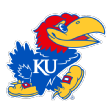
1. Kansas Jayhawks
Congratulations to Bill Self and the Jayhawks, proud owners of the overall No. 1 seed and (equally important!) the top spot in John Gasaway's list of the field's hottest teams. I realize "no great teams" was the evaluative battle cry of choice this season, and I used it as much as anyone. That being said, a KU team that sits at 30-4 and hasn't lost a game in seven weeks sounds like it's on the verge of the "G" word to me. Once Self settled on Landen Lucas as the answer at center alongside Perry Ellis, Kansas played consistently excellent D and made 55 percent of its 2s over the remainder of the Big 12 regular season.

2. Michigan State Spartans When you're the best 3-point shooting team in the nation, plus you excel at defense and rebounding, you have a really good chance of landing on a list like this one. And I haven't even gotten to the part about how the team's star might be the national player of the year. I love Buddy Hield, but it's also true that seeing Denzel Valentine in action is like being treated to a Hield who handles and dishes the rock with calm mastery. Watching the Spartans' Big Ten tournament semifinal win over Maryland in real time, it seemed like Tom Izzo's guys were cold from the outside. Then you pull up the box score after the game and see that MSU actually made 42 percent of its 3s. Sometimes I think this Michigan State team is excellent in ways our eyes aren't fully grasping.
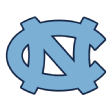
3. North Carolina Tar Heels Even at this late date, North Carolina is still being doubted, and in fact this strange phenomenon reminds me a bit of how Duke in 2009-10 was viewed with unceasing skepticism before, during and even after its national title. So be it. (No, I'm not promising the Tar Heels will cut down the nets in Houston. Just noting a parallel.) UNC won the ACC regular-season title, won the conference tournament and now stands at 28-6. Somehow a belief has gained currency that Carolina has only recently become really good on defense. In league play, however, Roy Williams had a defense that was about as good as Virginia's -- and one that was more statistically consistent to boot.

4. Oregon Ducks Oregon is flat-out scary. In Pac-12 play, the Ducks rang up 1.13 points per trip, and Tyler Dorsey has now made the leap from promising to present-tense outstanding. Ask Utah: Dorsey lit up Larry Krystkowiak's team to the tune of 23 points and 6 offensive rebounds. And that's just on offense. On D all Oregon did was hold the Utes to 12-of-28 shooting inside the arc. Chris Boucher is one of the nation's best shot-blockers, and if anything, the Ducks are getting stronger on defense the longer they play. This might be the best team not named "Arizona" that the Pac-12 has ever produced. (Calm down. The Pac-12 has only been around for five seasons.)
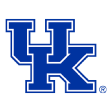
5. Kentucky Wildcats Everyone says Jamal Murray has now become one of the best players in the country. Well, everyone is exactly right. In SEC play the freshman hit 44 percent of his 3s while converting more than half his 2s and bringing a (previously vexing) turnover issue under control. And when you put a player like that alongside a fiendishly efficient point guard like Tyler Ulis, good things happen. True, the curious and unexpected thing about this Kentucky team is that it's only average on the defensive glass. But with that single exception, this group of Wildcats performs to the level of several UK predecessors that reached the Final Four.

6. Seton Hall Pirates For the balance of the Big East season Seton Hall played very good defense and not many people noticed. Then in the conference tournament at Madison Square Garden, the Pirates scored 1.07 points per possession over the course of three wins in a bracket that held true to form. So now everyone's on the bandwagon. Rightfully so. As Villanova discovered, scoring against the Hall is no easy task. (Granted, a swallowed whistle that went in SHU's favor in the 40th minute did reinforce that dynamic.) And while I'm no fan of "Indiana won 100 percent of its games on days ending in 'y' in 1975-76" metrics, I have found that games where Isaiah Whitehead makes more than half his 2s tend to end well for the Pirates.

7. Saint Joseph's Hawks No team on this list has turned from lukewarm to hot as fast as A-10 tournament champion Saint Joe's. Phil Martelli's group ended the regular season not only with a loss to St. Bonaventure (in a semi-away game played in Rochester, New York), but also, and much more strangely, with a defeat at home at the hands of Duquesne. At that moment, the Hawks were a very long way away from this list, but they burned through a brutal A-10 bracket (George Washington, Dayton and Virginia Commonwealth) and here they are. Even in a low-turnover era, DeAndre' Bembry and Saint Joe's stand out for their excellence in ending nearly every possession with a shot.

8. Connecticut Huskies Do this team the favor of seeing it in the present tense and not making too many inevitable comparisons to runs made two and five years ago by this same program. With an occasional hiccup here and there, the Huskies have mostly played outstanding defense in 2015-16, and Daniel Hamilton is improving as a scorer almost from game to game. We need a name -- specifically one better than "point forward" -- for these guys who handle the ball and crash the defensive glass. In the meantime, go ahead slot Hamilton alongside Denzel Valentine and Ben Simmons as yet another example of the nameless type of player.
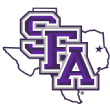
9. Stephen F. Austin Lumberjacks SFA hasn't lost a game yet in calendar year 2016. Thomas Walkup is able to accomplish ridiculous and quite simply unthinkable feats of offensive efficiency considering he's a 6-foot-4 wing/point guard who shoots just 23 percent on his 3s. Never one to let a little thing like perimeter shooting stand in his way, Walkup offsets this foible with superb production inside the arc and by distributing the rock to his highly capable teammates.
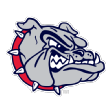
10. Gonzaga Bulldogs Just 23 days ago, it really looked like Gonzaga's season was finished. The Bulldogs had just done the unthinkable and lost at home to rival Saint Mary's, giving the Gaels the season sweep in the series. Since that day, however, the Zags have won five in a row (including a crucial road date at BYU), and you can make a case that each of those was a "must" win. Now Mark Few is in the tournament with two of the most talented players in the entire field: Domantas Sabonis and Kyle Wiltjer.
Now meet this bracket's 10 coldest teams:

1. Iowa Hawkeyes The last time we saw the Hawkeyes, they lost to an Illinois team that was then promptly blown off the floor 89-58 by Purdue. If you're an Iowa fan, the scary thing about that loss to the Illini is that it was merely the (admittedly extreme) culmination of an already manifest trend. Over the Hawkeyes' last 11 regular-season Big Ten games, opponents actually shot better from the field than did Fran McCaffery's men. In the abstract this is still a team with elite potential -- Iowa's largest margin of defeat all season, after all, has been just eight points -- but judging from the anger McCaffery displayed at his most recent postgame press conference, it appears seven losses over the last 12 games have taken a toll on the Hawkeyes.

2. USC Trojans Andy Enfield would resist the "cold" label, and in fact the coach has said, "I certainly wouldn't want to play us." Nor is Enfield's pride misplaced. In the big picture, USC making this list marks a rise in fortunes for a program that hasn't been to the tournament since 2011. So the Trojans dropped seven of their last 10 games. Enfield's team takes care of the ball, Jordan McLaughlin's arguably the most underrated combo guard in the field and, most importantly, this cold team is dancing.

3. Providence Friars There was a time (January) when the Friars were being projected as high as a No. 3 seed. Now PC is entering the tournament on a somewhat less lofty plane. Ed Cooley has called this state of affairs "the highs and lows of life, babe." Indeed. The Friars play good defense, and Kris Dunn's ability to record steals is a big part of the team's success on that side of the ball. But Providence never did get -- or hasn't yet gotten -- over the hump where shooting the rock is concerned.
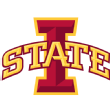
4. Iowa State Cyclones When ISU beat Kansas in Ames in late January, the Cyclones were 16-4 and it seemed probable that Steve Prohm's team would contend with the Jayhawks, Oklahoma and West Virginia for Big 12 supremacy. But since that day, Iowa State has gone just 5-7. Over the Cylcones' last 10 regular-season conference games, their defense allowed a whopping 1.13 points per trip. Late-season opponents have feasted on the offensive glass and had no trouble at all holding on to the rock. Mind you, ISU's offense is as good as ever (incredibly, it actually improved during the team's 5-7 stretch), but Prohm's guys need to get some stops.
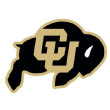
5. Colorado Buffaloes The Buffaloes haven't experienced the thrill of victory outside of Boulder against an opponent other than Washington State since Jan. 3. This is a very good defense and Tad Boyle's team is tough in its own building, but even with those home games included, CU shot just 41 percent on its 2s in Pac-12 play. On the plus side, the Buffs played well (including a 16-13 double-double from Josh Scott) in their 82-78 loss to Arizona in the Pac-12 tournament quarterfinals.

6. Duke Blue Devils Duke is depleted and defensively inept. The wait for Amile Jefferson turned out to be futile (well, at least until next season), and the Blue Devils simply have not been able to defend the rim with their available personnel. Give Mike Krzyzewski credit for churning out yet another outstanding offense, but the past tournament history of Duke teams with questions on defense is not encouraging.
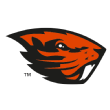
7. Oregon State Beavers Oregon State does not care in the slightest that it's on this list, and that is precisely the correct response. When you haven't been to the tournament since 1990, little things like going 9-10 over your past 19 games are irrelevant. Beavers, I salute you. Your 26-year drought is at an end. And to the rest of the field (is OSU gone yet?) I will merely point out that Wayne Tinkle's team was actually outscored over the course of 18 Pac-12 regular-season games. No team that recorded fewer points than its conference opponents has made it past the first weekend in the NCAA tournament in 11 years.

8. Dayton Flyers Since Valentine's Day, Archie Miller's team has gone just 4-4. Two of those wins came in overtime, and two of the losses occurred at home. This is, as always, an excellent defensive team. In the last month of the A-10 regular season, however, the Flyers' offense went missing. Dayton scored just 0.96 points per trip over its last six regular-season games.
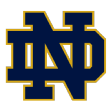
9. Notre Dame Fighting Irish Mike Brey's team lost to North Carolina by 31 points in the ACC tournament semifinals, putting an extreme exclamation point on a 3-4 run at the end of the season for the Fighting Irish. The once (indeed, invariably) high-voltage ND offense has been unplugged somehow, and Brey and his players have yet to rewire accordingly.
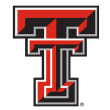
10. Texas Tech Red Raiders I'm not going to deduct points from Tubby Smith's team for losing late-season games at Kansas and West Virginia. That being said, letting TCU beat you on a neutral floor is not the best launch angle for your first NCAA tournament run since 2007. Like Oregon State (see No. 7), the Red Raiders will also be trying to prove that a team that was outscored during conference play can indeed survive the first weekend in the field of 68.
